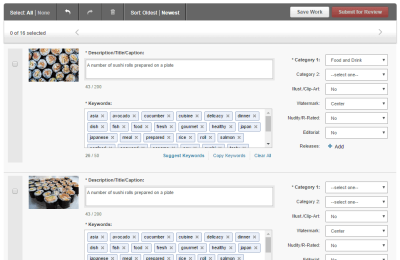Hey there, fellow photographers! If you’re curious about how Shutterstock is paying us in 2025, you’re in the right place. As one of the biggest stock photo platforms out there, Shutterstock’s revenue model has evolved over the years, and this year is no different. They’ve shifted how they reward creators, balancing between subscription sales, on-demand purchases, and licensing fees. Whether you’re a seasoned pro or just starting out, understanding this model can help you make smarter decisions about which images to upload and how to optimize your earnings. So, let’s dive into what makes
Understanding Shutterstock’s Payment Structure for Photographers
Alright, let’s get into the nitty-gritty of how Shutterstock pays us in 2025. The platform’s payment structure can seem a bit complex at first, but once you get the hang of it, it’s pretty straightforward. Here’s what you need to know:
- Revenue Share Based on Subscription and On-Demand Sales: Shutterstock primarily earns revenue through two channels—subscriptions and on-demand image purchases. The percentage of revenue you get depends on the type of sale.
- Royalty Rates Vary by Content Type and License: For images, videos, and vectors, royalty rates differ. For example, exclusive content tends to earn higher royalties compared to non-exclusive uploads.
- Payment Tiers and Earnings: Shutterstock has set earning tiers—initially, you might earn around 15-20% of each sale, but as your portfolio grows and your earnings increase, your royalty rate can rise up to 30% or more.
Breakdown of Typical Payment Percentages
| Sales Type | Royalty Rate | Notes |
|---|---|---|
| Subscription Downloads | 15-20% | Varies based on subscription plan and total downloads |
| On-Demand Purchases | 25-30% | Higher than subscription sales, more lucrative for creators |
| Extended Licenses | Up to 30% | Special licenses that allow broader usage, higher payout |
Additional Factors to Keep in Mind
Besides percentages, there are a few other things that influence your earnings:
- Exclusive vs. Non-Exclusive Content: Exclusivity can boost your royalty rate, but it also limits where else you can sell your images.
- Contributor Level: Shutterstock has a tier system—new contributors earn less initially, but as you upload more and hit milestones, your rate can increase.
- Currency and Payment Thresholds: Payments are issued once you reach a minimum threshold, which varies depending on your country and payment method.
So, in a nutshell, Shutterstock’s payment structure in 2025 rewards consistent contributors and those who focus on high-quality content. Understanding these details helps you strategize better and maximize your earnings. Stay tuned for more tips on how to optimize your portfolio and earn even more!
Factors Influencing Shutterstock’s Photo Payment Rates in 2025
When it comes to understanding how much you’ll earn per photo on Shutterstock this year, it’s essential to recognize the various factors that influence these rates. Shutterstock is a dynamic platform, and its payment structure isn’t static — it evolves based on several key elements.
First up, license type plays a significant role. Shutterstock offers different licensing options, primarily Standard and Enhanced licenses. Standard licenses are more common and typically generate lower payments, whereas Enhanced licenses, which provide broader usage rights, tend to offer higher payouts.
Another big factor is your contributor level. Shutterstock categorizes contributors into levels based on their performance, sales, and quality of submissions. Higher levels often come with increased commission rates. For example, a contributor who’s consistently uploading high-quality images that sell well may move up the tiers, earning more per download.
Image quality and relevance also matter. Shutterstock emphasizes high-resolution, well-composed, and relevant images. Photos that meet or exceed their quality standards are more likely to be downloaded, which directly impacts your earnings. Conversely, rejected or low-quality images won’t generate any income.
Market demand and trends are another influencing factor. During certain times, specific themes or styles become hot topics, increasing the likelihood of downloads. Shutterstock continually analyzes market data to adjust payout strategies, favoring images that align with current trends.
Lastly, your geographic location can subtly influence earnings. While Shutterstock operates globally, some regions have different market demands and purchasing power, which can impact the average payout rates for images from contributors in various parts of the world.
In summary, your earnings on Shutterstock in 2025 are shaped by license type, contributor level, image quality, relevance to current trends, and even geographic factors. Staying aware of these can help you optimize your portfolio and maximize your earnings.
Average Earnings Per Photo on Shutterstock in 2025
So, what kind of earnings can you expect per photo on Shutterstock in 2025? While figures can vary widely depending on multiple factors, let’s look at some general trends and averages to give you a solid idea.
On average, contributing to Shutterstock can bring in anywhere from $0.25 to $2.50 per download for standard images. Keep in mind, this is a broad range, and your actual earnings depend on your contributor level, the license type, and how well your images perform.
Premium contributors or those with higher levels can see higher payouts, sometimes earning $3 to $4 per download or more for exclusive or highly sought-after images. Conversely, newer contributors or those with less optimized portfolios might see the lower end of the spectrum initially.
Let’s break down some typical scenarios:
- Standard License Downloads: $0.25 – $1.00 per download
- Enhanced License Downloads: $4.00 – $15.00+ per download
- Exclusive Content: Potentially higher payouts due to exclusivity agreements
It’s also worth noting that the number of downloads per photo can significantly impact your overall earnings. A single popular photo that gets hundreds of downloads can generate a substantial income, even if the per-download rate is modest.
Another thing to consider is your cumulative earnings. If you upload a large volume of high-quality images that align with current trends, your chances of earning a steady income increase. Over time, consistent contributors can see their average earnings per photo improve as their portfolio gains reputation and visibility.
In conclusion, while the average earnings per photo on Shutterstock in 2025 can vary, understanding these ranges and factors can help you set realistic expectations and strategize your contributions accordingly. Focus on quality, relevance, and consistency, and you’ll be well on your way to maximizing your earnings this year!
Tips to Maximize Your Earnings on Shutterstock in 2025
So, you’re eager to boost your income from Shutterstock this year? Great! The good news is that with a few smart strategies, you can make your portfolio work harder for you. Let’s dive into some practical tips to help you maximize your earnings in 2025.
1. Focus on Trending and Evergreen Topics: Stay ahead by creating images that tap into current trends, like remote work, sustainability, or new technology. At the same time, don’t forget evergreen subjects such as business, nature, and lifestyle that always have demand. Combining trendy and timeless content ensures a steady stream of downloads.
2. Optimize Your Keywords and Titles: When uploading, spend time crafting descriptive, accurate titles and tags. Use relevant keywords that potential buyers are searching for. Think like a buyer—what terms would they use? The better your metadata, the higher your images will rank in search results.
3. Upload Consistently: Regular uploads keep your portfolio fresh and increase your chances of being featured. Set a manageable schedule—whether it’s weekly or bi-weekly—and stick to it. The more quality images you have online, the more opportunities for sales.
4. Diversify Your Portfolio: Don’t put all your eggs in one basket. Create a variety of images across different themes, styles, and formats. This not only attracts a broader audience but also helps you discover what sells best for you.
5. Use High-Quality, Unique Content: Stock buyers look for standout images. Invest in good equipment, pay attention to lighting, composition, and post-processing. Unique perspectives or niche subjects can set your work apart from the competition.
6. Engage with the Shutterstock Community: Participate in forums or social media groups dedicated to stock photography. Sharing tips, feedback, and success stories can inspire new ideas and keep you motivated.
7. Keep Up with Shutterstock’s Trends and Policies: Stay informed about platform updates, changes in payment structures, and popular search trends. Adjust your strategy accordingly to stay ahead of the curve.
Remember, patience and consistency are key. Over time, as you refine your approach and build a diverse portfolio, you’ll see your earnings grow. Happy shooting!
Comparison of Shutterstock Payment Rates with Other Stock Photography Platforms
When it comes to earning from your photos, the platform you choose makes a big difference. Let’s compare Shutterstock’s payment rates with some of the other popular stock photography sites to give you a clear picture of where your efforts might be best spent in 2025.
| Platform | Payment Model | Royalty Rate / Earnings per Download | Additional Notes |
|---|---|---|---|
| Shutterstock | Royalty-based, contributor level-dependent | 10% to 40% of the price (up to $0.25–$0.75 per download for standard images) | Higher earnings possible with increased sales and exclusive content |
| Microstock & exclusive contributor tiers | 15% to 45% depending on exclusivity and sales volume | Exclusive contributors earn higher royalties; offers exclusive licensing options | |
| Flat royalty rate | 33% of the license fee, typically $0.25–$5 per download | Higher earnings with larger sales volume; seamless integration with Adobe Creative Cloud | |
| Royalty-based, contributor level-dependent | 10% to 40% of the price (up to $0.25–$0.75 per download for standard images) | Higher earnings possible with increased sales and exclusive content | |
| Subscription-based, contributor earnings depend on license type | Varies; typically 34% for subscription downloads, higher for extended licenses | Offers a flexible earning structure, with higher rates for exclusive content |
As you can see, Shutterstock’s rates are competitive, especially as you climb the contributor tiers. However, platforms like Adobe Stock offer a more straightforward royalty rate, which can be easier to predict. If maximizing earnings is your goal, many photographers choose to distribute their work across multiple platforms, tailoring their content to fit each site’s audience and earning model.
Ultimately, your choice depends on your style, exclusivity preferences, and how much effort you’re willing to put into optimizing your presence. Experimenting across different platforms might be the best way to discover where your images perform best and generate the most income in 2025.
Conclusion and Final Thoughts on Shutterstock Payments in 2025
As we look ahead to 2025, understanding Shutterstock’s payment structure is crucial for photographers aiming to maximize their earnings. The platform continues to evolve, offering new opportunities and challenges for contributors. With the introduction of flexible licensing options and increased demand for high-quality images, photographers have the potential to boost their income significantly.
Key points to consider include:
- Pay Rates: Shutterstock’s payment rates vary based on factors such as contributor level, image licensing type, and subscription plans. Typically, contributors earn between $0.25 to $0.38 per download for standard licenses, with potential bonuses for exclusive content.
- Contributor Levels: As you contribute more and meet specific milestones, your earning potential increases through higher royalty rates and exclusive opportunities.
- Market Trends: The growing demand for diverse, niche, and high-resolution images offers opportunities for photographers to diversify their portfolios and increase sales.
Additionally, staying informed about platform updates, licensing changes, and emerging trends will help photographers adapt and optimize their earnings. While competition remains fierce, consistent quality and strategic portfolio management can lead to a steady income stream from Shutterstock in 2025.
In summary, Shutterstock continues to be a viable platform for photographers seeking reliable income, provided they stay proactive, adapt to platform changes, and focus on creating high-demand content. By understanding the payment structure and market dynamics, contributors can make informed decisions to grow their photography business in the coming year.


